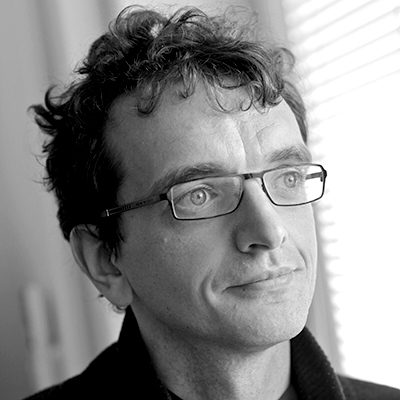How can labs have more real-world impact? Giulio Quaggiotto speaks to Tobias Öhman, programme manager at Swedish innovation agency Vinnova, about a new lab format to promote experimentation in the public sector.
How did you come up with the ‘Reality Labs’ concept, and how does it differ from other lab processes you've tried in the past?
We have funded innovation initiatives within the public service since 2011. We started with ‘innovation sluices’; organisational structures to support ideas from public servants and help turn them into reality. In a way, that was a starting point for more interest in innovation management tailored for the public sector in Sweden.
We then developed that concept into ‘testbeds’, which helped outside organisations work together with the public sector and test new ideas. What we noticed, however, was that those testbeds varied in their level of integration with the everyday reality of public services. Some of them were more like traditional, independent laboratories with no real contact with ordinary services, but well suited for testing specific functions of ideas in a very narrow field. We also had test beds that simulated real-life situations; for instance traffic in a particular area but without any real cars or pedestrians. There was no ‘reality’ involved here other than that the facility was realistic.
And then we had some test beds operating within the real services and facilities of the public sector. For instance, testbeds within an actual hospital where products and services could be tested together with real patients and civil servants. These types of test beds are very cost efficient since they don't require new infrastructure and new facilities. They also provided more insights since the tests are performed on real-life scenarios.
But we also saw some difficulties with operating in ‘the real world’. These testbeds became new de facto organisations within existing organisations, and often with a departure from traditional administrative procedures of, say, a hospital. They acted like a dispatcher for stakeholders from the outside who wanted to find a willing clinic or unit to test with. But since they were an administrative unit without much contact with the clinics, they were often seen as foreign and acted somewhat in isolation from their host.
What we want to achieve now with the Reality Labs is to fund innovation structures in the public sector to build ‘labs’ at the very point of value creation: that is, for instance, at the clinic or in the classroom where healthcare or education is delivered. By pushing the public sector to open these structures for experimentation, we believe we will get more tests running in the real world and solutions that are immediately relevant to the real world and real users.
The difference with Reality Labs and other innovation labs is the proximity to the frontline, and that we require the reality labs to be focused on a technology or need-based area, for example the transitions between healthcare and elderly care, or AI and diagnostics at the point of care (for example, digital solutions for university students with special needs). Through this, we hope to create clusters of interest and expertise. Like the ‘old’ testbeds, these labs should be able to interact with external stakeholders. Unlike the testbeds, however, the public sector will have the initiative by proactively searching for appropriate solutions instead of testing every imagined solution that is ‘knocking on the door’ of the testbed.
How do you apply to be part of a Reality Lab?
We are funding 15 labs in this round (recruited through an open call) and the way to engage will differ from lab to lab. It was up to public sector entities to express their interest, and to shape a programme in the way that best fits their needs, provided it complied with our principles. It is important to know that we don’t fund individual experiments, but rather the ‘lab’ itself. We have asked each applicant to describe how they are going to ensure the development of seven aspects that we think are important for a successful Reality Lab, namely:
- That the lab is really performing experiments in the organisation’s core business, at the front end.
- That they can express a special focus of interest that is specific but at the same time with broader applicability (beyond the local context).
- That they know the market of their focus of interest, and that they have an ambition to communicate their results.
- That the experimentation process is open to other stakeholders, that there is a possibility to participate and that there is an agile mindset, with experiments performed iteratively and with possibilities to quickly initiate and terminate cooperations with external entities.
- That the applicant is building an organisation for testing and experimentation with high potential to survive after the funded project is over. That is, a business model of some sort.
- That they have an integrated policy strategy from start; they should understand what policies apply in their area of focus and how to change/influence them.
- That they should (in most cases) have a clear view of how to utilise digital services.
What has been the response to date? Any surprises?
The response to the call has been larger than expected – our goal was to achieve 30 applications, and we received 71 from across the public sector. 15 were funded and started in June. And surprisingly (for the first time) there were several government agencies – who normally would not bother for the small amounts of funding we can provide – among the applicants. We believe that this is a sign of a new interest from new segments in public innovation, who are seeking other values and support for becoming more innovative above just funding. This is partly the reason why we are looking into the possibility of forming a national policy lab (see below).
An increasing number of governments are adopting the concept of testbeds and experimentation. How does the experimentation language resonate with your constituents?
For good reasons, our constituents have historically had a strong ethos of stability rather than experimentation. This new approach to improve public service through systematic testing will take time to adopt. But at the same time, we see a willingness to finance the continuation of these structures as several county councils are now budgeting for innovation and experimentation.
If Reality Labs are a success, what comes next?
When we started pushing for experimentation at the frontline and in the ‘real world’ of public services, we realised that this is where most of the existing policies and regulations are not only safeguarding against unwanted risks, but are also at times hindering innovation. Old policies that are not adapted to new ways of working are preventing new solutions from being explored and tested. Often this principle of stability and carefulness is well justified, but sometimes the policy is really just outdated.
The next initiative therefore is what we call a Policy Lab; it is going to support innovation by encouraging experimentation and re-evaluation of existing policies. The goal is to make it easier to test, develop and bring to market solutions that we technically can already build but so far have not been able to effectively scale due to regulation. We are at the moment trying to understand how we can help agencies to adjust their regulatory framework to innovation.
This blog was first published on the Mohammed Bin Rashid Centre for Government Innovation website.

